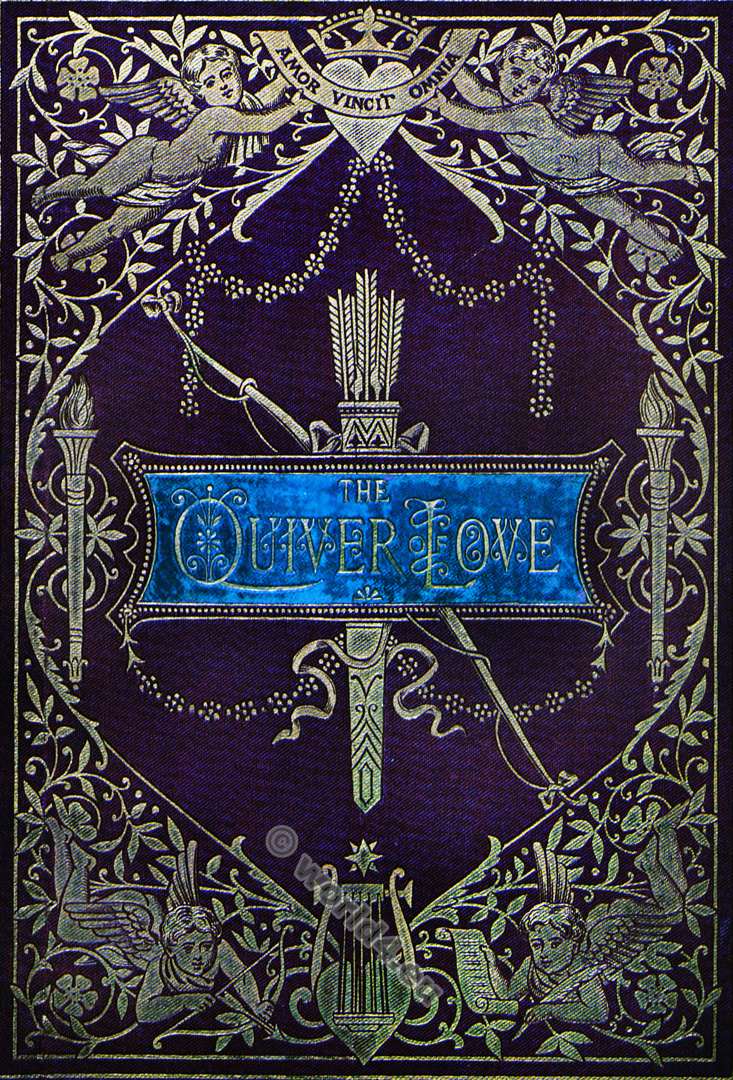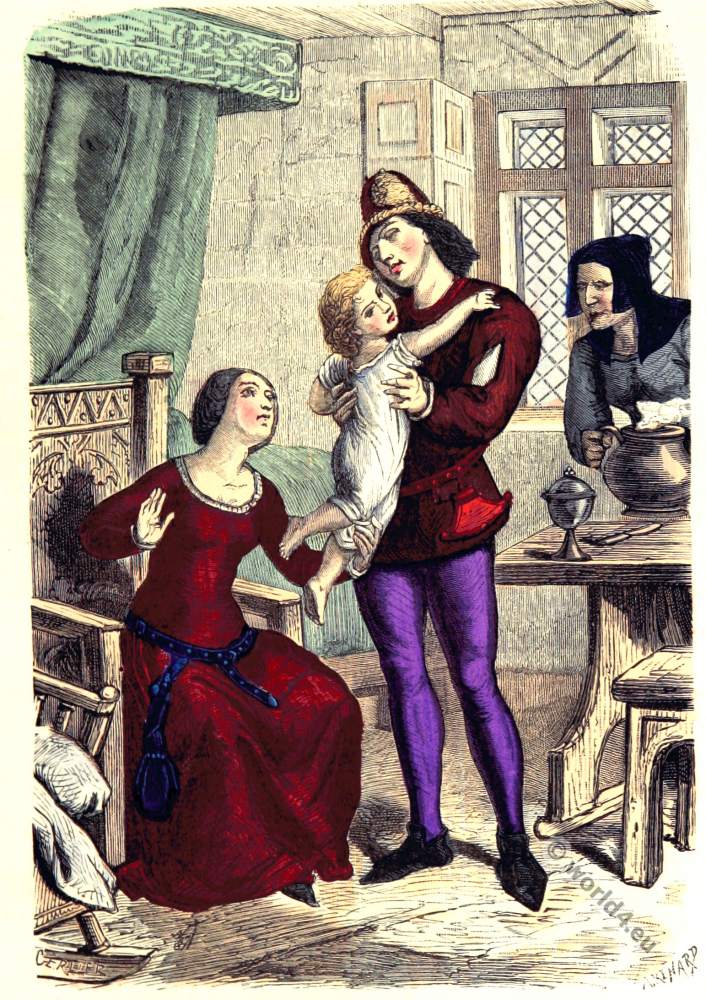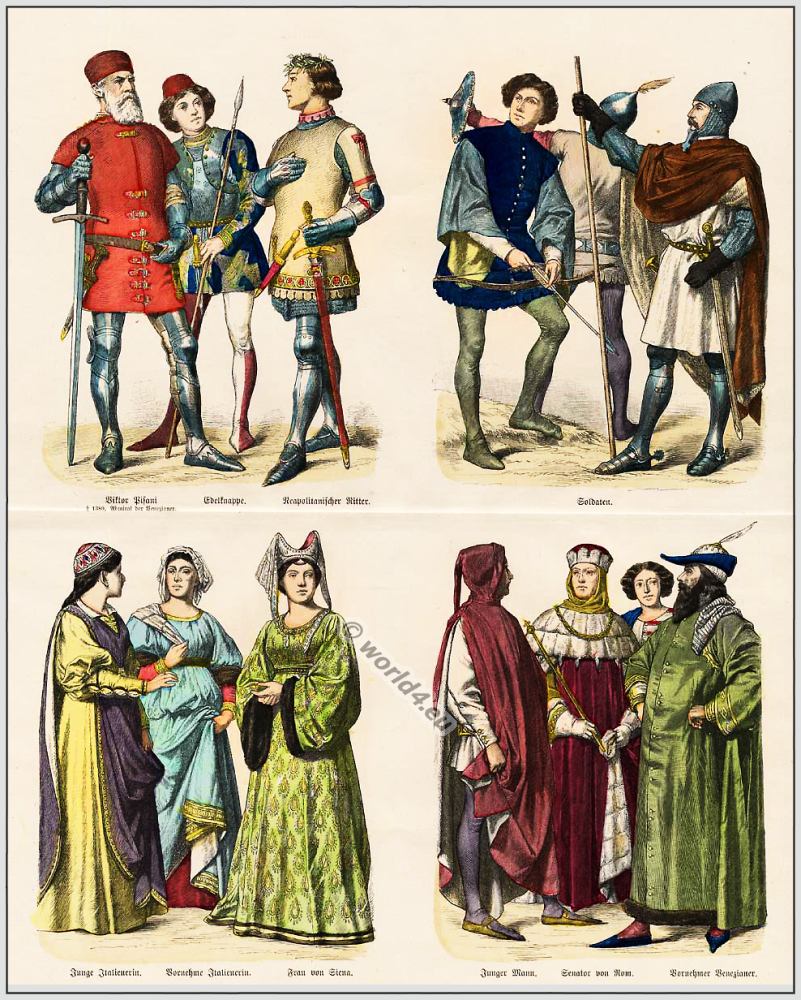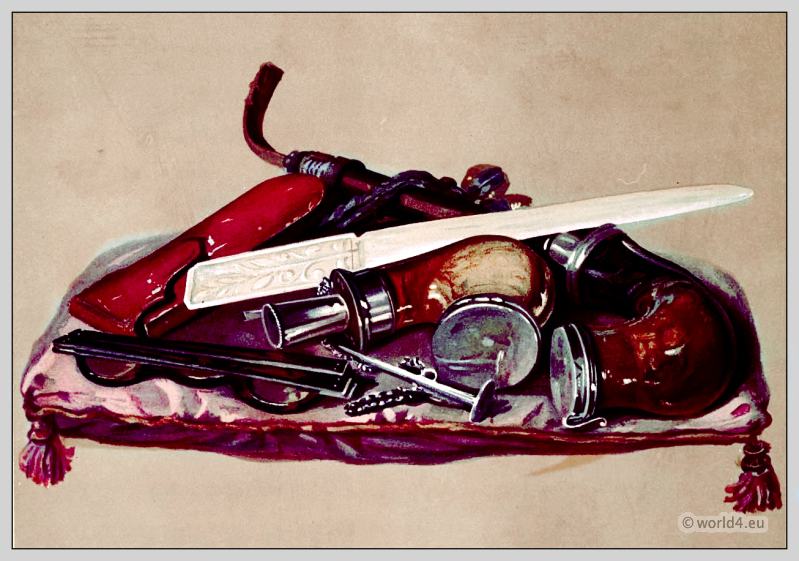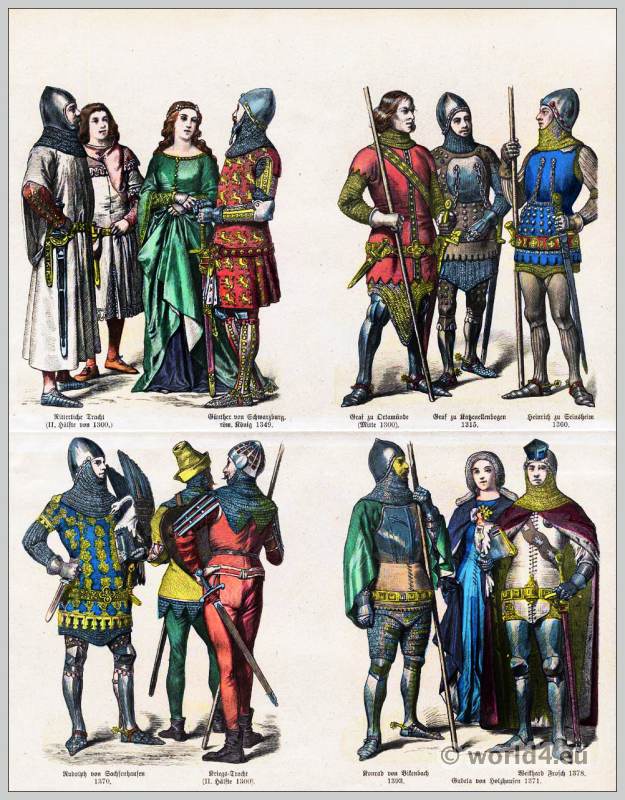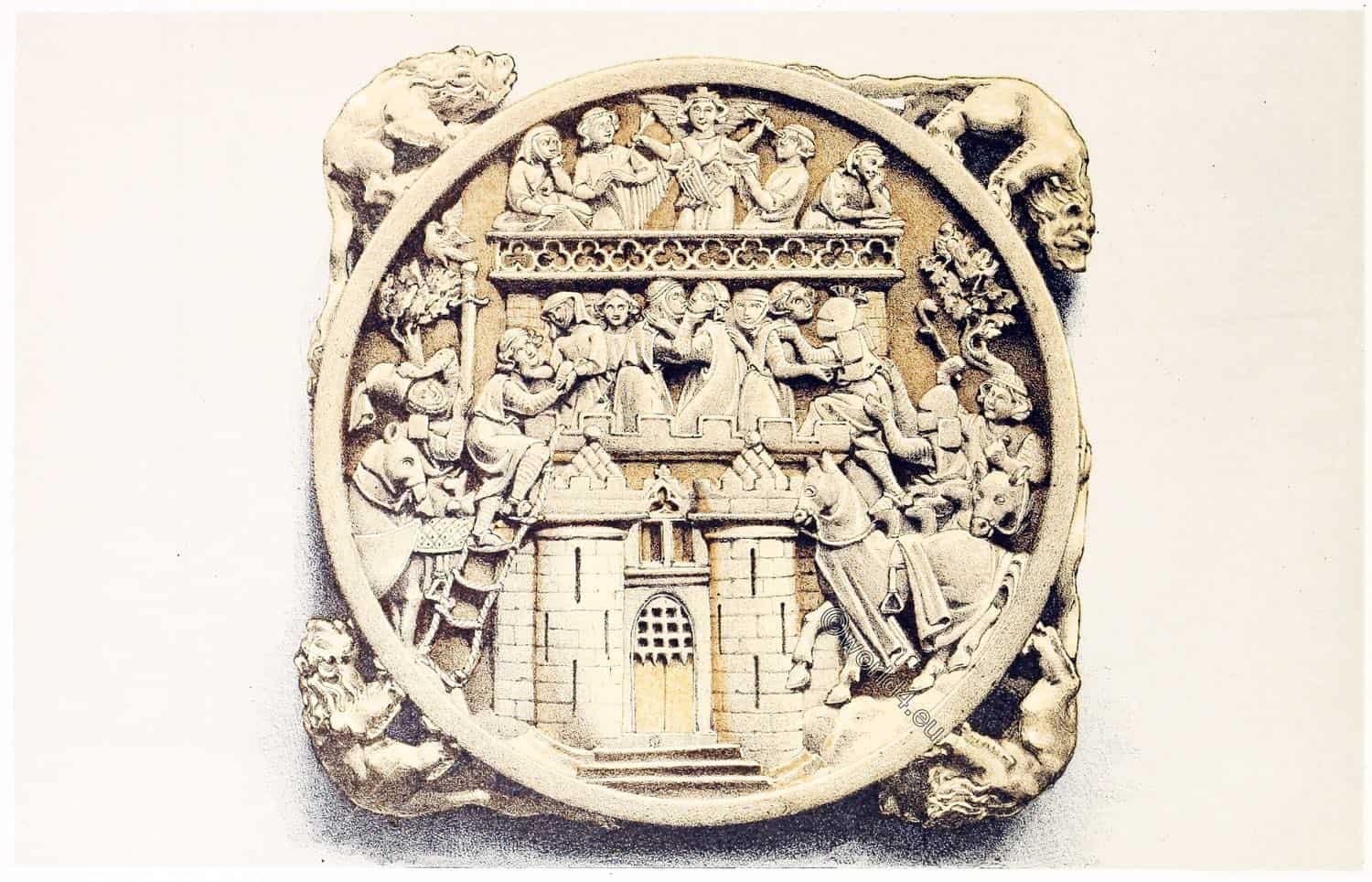
MIRROR CASE OF THE FOURTEENTH CENTURY, IN CARVED IVORY.
Museum of Ornamental Art.
Of the many specimens of mediaeval mirror covers that have come down to us, the present is by far the finest. It forms part of the Marlborough House collection, and had, previously to its acquisition by the nation, been for many years in this country, having been engraved in the “Archaeologia” in the year 1808.
The subject is a favorite one with mediaeval artists, and is known as “The Assault of the Castle of Love.” The composition represents a fortress with an advanced gate, or barbican, with portcullis and circular flanking towers. On the summit of the donjon, which is surmounted by a beautiful balustrade of open-work trefoil panels. Cupid crowned and represented with six wings is seen wounding two maidens with his darts, whilst two love-sick damsels are reclining in attitudes of melancholy.
On the rampart, lower down, a party of damsels are eagerly assisting mailed knights to scale the walls, which is being effected on one side by means of a rope ladder; the action thus represented is evidently that of the rescue of the maidens from the power of the tyrannical deity. The date of this piece, judging from the costume of the mailed figures and other indications, is about the year 1330, a period which seems to have been unusually fertile in works of this kind. It is the lid, or upper half of the cover, and was originally fitted on to the lower part, containing the metal mirror, by means of a thread or screw round the margin.
The rich collection of Andrew Fountaine, Esq. contains a specimen, complete with both its sides, which is probably unique.
Source: The treasury of ornamental art, illustrations of objects of art and vertù by Sir John Charles Robinson. Marlborough House (London, England), 1858.
Related
Discover more from World4 Costume Culture History
Subscribe to get the latest posts sent to your email.

